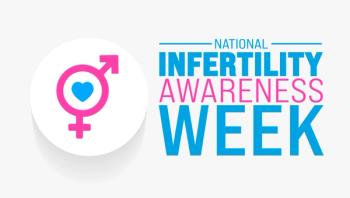
Despite abortion bans in several states, a new study showed no significant shift in where OBGYNs choose to practice.

Despite abortion bans in several states, a new study showed no significant shift in where OBGYNs choose to practice.

A nearly 2-fold increase in women veterans’ health literature has been reported since the previous review in 2017.

Leeya Pinder, MD, MPH, highlights a national conference to spotlight the role of human papillomavirus in cancer, emphasizing vaccination, screening innovations, and collaborative efforts to eliminate cervical cancer.

The potential shutdown of the 30-year Women’s Health Initiative threatens critical research on aging, disease prevention, and postmenopausal women’s health.

A UK study links maternal anemia in early pregnancy with increased congenital heart disease risk in offspring.

New research reveals a significant link between urinary incontinence and increased cardiovascular disease risk, even without reduced physical activity.

A new University of Sydney study reveals a strong connection between poor oral health and higher rates of migraines, body pain, and abdominal pain in women.

A new study reveals a surge in firearm suicides among women, many with no prior mental health history.

A UK survey reveals growing recognition and interest in obesity medications such as semaglutide and tirzepatide, with women showing significantly higher awareness and understanding.

A new study reveals that while patient acceptance of artificial intelligence in breast cancer screening is growing, trust varies based on personal medical history and demographics.

Find out the top 5 latest updates and headlines in fertility research in honor of National Infertility Awareness Week (April 20-26, 2025).

A new study found that older women experiencing persistent or changing social isolation are at higher risk of unhealthy eating habits.

A new survey highlights gender differences in knowledge and attitudes toward GLP-1/GIP receptor agonists.

Review some of the top stories from the Contemporary OB/GYN website over the last week, and catch up on anything you may have missed.

A new study finds that women who experience menopause before the age of 40 years face a higher risk of cognitive decline.

A new study found that routine mammography significantly reduces late-stage diagnoses and mortality in women aged 70 years and older.

Stephanie Pearson, MD, FACOG, shares her journey transitioning from a provider to a patient following a work-related accident.

A new study reveals that polycystic ovary syndrome patients with subclinical hypothyroidism face greater risks of hormonal and metabolic imbalances.

A new study found that cell-free DNA from routine prenatal testing can accurately identify preterm birth risk without added cost or procedures.

A new study links gestational diabetes and high blood pressure during pregnancy to higher long-term cardiovascular disease risk, especially among women with obesity.

A novel oral antibiotic, gepotidacin (Blujepa; GSK), has demonstrated its effectiveness in treating uncomplicated urogenital gonorrhea, according to the results of a recent phase 3 clinical trial.

A new study finds that digital behavior change programs do not significantly increase moderate to vigorous physical activity among women with a history of hypertensive pregnancy disorders.

A phase 3 analysis shows that estetrol with drospirenone significantly reduces menstrual pain, mood swings, and other menstrual symptoms, offering clear benefits for both new and switching contraceptive users.

New research reveals elevated C-reactive protein levels during the follicular phase of menstruation may explain pain crisis patterns in female sickle cell patients.

A new study reveals a sharp rise in preventable pregnancy-related deaths across the United States, with significant racial, age, and state-level disparities.

A landmark fertility achievement, this artificial intelligence-driven intracytoplasmic sperm injection system marks a major step toward full automation in assisted reproductive technology.

Review some of the top stories from the Contemporary OB/GYN website over the last week, and catch up on anything you may have missed.

A new study finds that Black women living in economically disadvantaged neighborhoods face significantly higher breast cancer mortality rates.

A recent study found that a simple RNA-based blood test can identify the risk of hypertensive disorders in pregnancy months before symptoms appear.

A recent study highlights the effectiveness of drospirenone with estetrol in significantly reducing physical and emotional menstrual symptoms, especially among new hormonal contraceptive users.